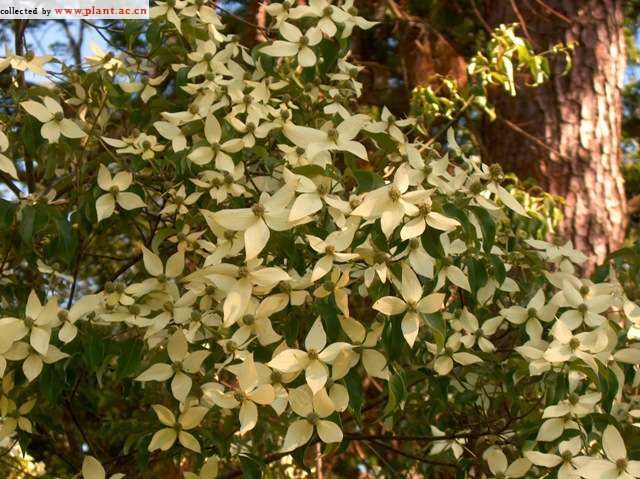Cornus ellipticaDogwood
科:山茱萸科
Family:Cornaceae
属:山茱萸属
common name:Dogwood
introduce:Plant Type: Broadleaf evergreen
Family: Cornaceae
Missouri Native: No
Native Range: China
Height: 15 to 20 feet
Spread: 12 to 15 feet
Bloom Time: June - July
Bloom Color: White
Sun: Full sun to part shade
Water: Medium moisture
Maintenance: Medium
General Culture:
Best grown in organically rich, medium moisture, well-drained, sandy soils in full sun to part shade. This tree is winter hardy to USDA Zone 7. If planted in the St. Louis area, it should be sited in a protected location.
Noteworthy Characteristics:
Cornus elliptica is an evergreen to semi-evergreen dogwood that is native to China. It was introduced to the U. S. in 1980 by Ted R. Dudley of the U. S. National Arboretum. It is a small flowering tree that grows 15-20?tall. It features thick, glossy, bright green leaves (to 3?long) that turn purplish (sometimes with inward-curling margins) in winter. Leaves drop off in spring as the new growth appears. The showy parts of the dogwood 揻lower?are the four, pointed, petal-like, white bracts (1.5-2?across) that surround a center cluster of insignificant, yellowish-green, true flowers. The bracts are narrow and, as in the case of the Kousa dogwood, distinctively pointed. Unlike most other dogwoods, this tree blooms in early summer. Flowers are followed by berry-like fruits (to 1?diameter) which mature to red. Fruits are technically edible, but are usually left for the birds. Cornus elliptica was originally designated as C. kousa var. angustata. It has also been called Cornus capitata var. angustata and Cornus angustata.
Problems:
No known serious insect or disease problems. It does not appear to suffer from the anthracnose problems that have devastated planting of flowering dogwood (Cornus florida) in some geographic areas. Winter hardiness is a significant problem for the St. Louis area.
Uses:
A beautiful flowering tree. Plant as a specimen or in small groupings on residential property around homes, near patios or in lawns. Also effective in shrub borders, woodland gardens, bird gardens or naturalized areas.
